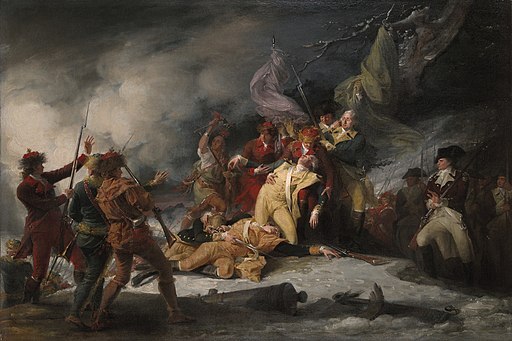British Colonial America: Opportunities to Heal, Opportunities to Kill
“The [national spirit for freedom of action] was evidenced by the firing of a private smallpox hospital on an island near Marblehead, a coastal town in Massachusetts, in 1773. During the night twenty sailors and fishermen rowed out with tubs of tar and burned the hospital to the ground because it excluded the general public. For this egalitarian activity the perpetrators were imprisoned, but then freed by the people and no further action was taken against them.” (Grant, 2019, p. 242)
Lady Mary Wortley Montagu's public inoculation of her child was the precipitating event for variolation campaigns in most of the world, but in Britain's North American colonies the critical event was the testimony of an African slave named Onesimus. Onesimus was given to the Puritan minister Cotton Mather in 1707 by his Boston congregation, and one day (Mather only indicates that it was "many months" before a smallpox outbreak in 1721) Mather asked Onesimus whether he had ever had smallpox, and he replied, "Yes and no." Onesimus explained that he had undergone an operation in Africa to induce a weak case of smallpox and thereby acquire immunity to the disease. Intrigued, Mather interviewed other Africans in Boston and heard similar stories about a procedure that granted immunity to smallpox. Early reports of smallpox inoculation in Britain further galvanized interest in the procedure.
Mather became an outspoken proponent for variolation, going so far as to label those who opposed the practice as "Satanic" (Grant, p. 230); however, he could not take action because he had no smallpox samples. Mather gained an opportunity to put theory to practice during a smallpox outbreak in Boston 1721, and on June 26, 1721, Dr. Zabdiel Boylston, an ally of Mather, performed the first variolations in British North America on his son, his slave, and his slave's son.
The next major push for variolation was undertaken by the polymath printer Benjamin Franklin in Philadelphia. Beyond funding a "Society for Inoculating the Poor" that provided variolation services free of charge, Franklin used his newspaper, The Pennsylvania Gazette, to publish statistics on variolation and quash rumors that his own son had died of variolation complications. Franklin's ultimate ambition was to disseminate knowledge of how to perform variolation as wide as possible, and to that end he printed informational pamphlets to be distributed to the poor and residents of other colonies, which helped make Philadelphia a medical tourist destination that attracted people whose local government had forbidden variolation.
The final stage of variolation in British Colonial America occurred during the Revolutionary War. The Continental Army officially prohibited variolation, which not only left soldiers even more vulnerable to disease but also led to outbreaks within the ranks when soldiers became contagious after they were variolated privately. Contemporary figures like John Adams and General Horatio Gates attributed the failed American invasion of Quebec of 1775 to the ravages of smallpox on the army, and it appears that this defeat forced Continental Army officers to reconsider their policy on variolation. On May 16, 1776, General Benedict Arnold, who had previously threatened soldiers who variolated with the death penalty, permitted variolation, only to have his edict nullified the next day by Major General John Thomas, who would himself succumb to smallpox less than a month after issuing this order. After yet another brush with smallpox when British forces ordered recently variolated (and therefore infectious) Bostonians to leave their besieged city, Continental Army Commander-in-Chief George Washington stated his intention on January 6, 1777 to have his soldiers variolated. Attempts by subordinates to defy or ignore this order stalled this project, but by February, with help from the Continental Congress, a systematic plan for variolation had been organized.
British Colonia America would also, however, be the site for a much less admirable event in the history of smallpox: its weaponization as a tool for genocide. In 1763, at the end of the Seven Years' War, a Native American leader known as Pontiac organized an uprising that tried to expel the British from the frontier territory of the Great Lakes region. In response, Jeffrey Amherst, British Commander-in-Chief in North America, wrote to Colonel Henry Bouquet, a Swiss mercenary stationed at Fort Pitt in turbulent western Pennsylvania, and asked him whether it would be possible to purposefully induce smallpox in the Native American population. Bouquet replied that he would try and stated his intention to variolate blankets with smallpox. A journal entry by Captain Ecuyer indicates that two blankets and a handkerchief were sent to enemy tribes and a smallpox outbreak began shortly thereafter.




